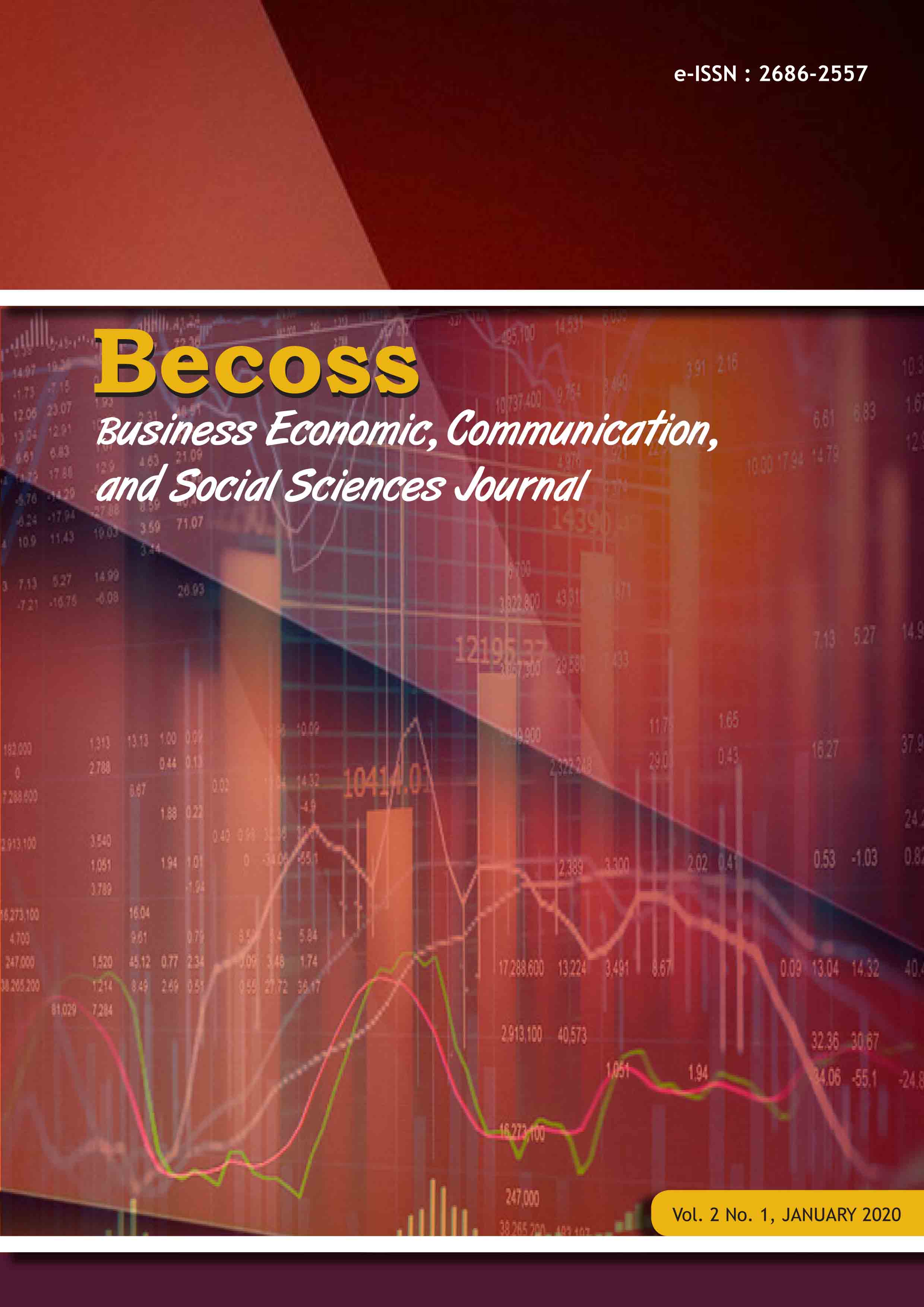Rancangan “Wonderful Indonesia†Sebagai Branding-Destination
DOI:
https://doi.org/10.21512/becossjournal.v2i1.6062Keywords:
branding-destination, consistency, implementation, visual communication, wonderful IndonesiaAbstract
The aim of this paper is to examine Indonesia’s latest branding-destination, “Wonderful Indonesiaâ€. This study attemps to find the missing link between what the country is trying to communicate, represented by the logo of its destination brand, and how this logo is perceived by its audience. Furthermore, in conjunction with its campaign, it is also important to discover whether design as a discipline, plays a major role in the strategic planning of the nation’s grand-design. Required data of logo implementation and distribution were collected through online media as well as above the line and below the line media. The method used is based on qualitative research dan data was examined through art history, visual communication design dan marketing approaches. The outcome suggests that the Ministry responsible for tourism needs to re-evaluate its branding strategy in a more strategic basis due to its lack of consistency in terms of implementations and communications.References
Anholt, S. (2003). “Branding Places and Nations,†in Brands and Branding. London: The Economist.
Anholt, S. (2008). “Nation Branding in Asia,†Place Branding and Public Diplomacy. New York: Palgrave Macmillan.
Brandon, J.R. (1967). The Theatre in Southeast Asia. Cambridge, MA: Harvard University Press.
Endraswara, S. (2003). Metodologi Penelitian Kebudayaan. Yogyakarta: Gajah Mada University Press.
Holy, M.A. (1984). Panowsky and the Foundations of Art History. Ithaca and London: Cornell University Press.
Kartika, D.S. (2004). Seni Rupa Modern. Bandung: Penerbit Rekayasa Sains.
Kementerian Pariwisata Republik Indonesia. (2018). Laporan Akuntabilitas Kinerja.
Kertajaya, H. & Yuswohady. (2005). Attracting Tourists, Traders, Investors: Strategi Memasarkan Daerah di Era Otonomi. Jakarta: PT Gramedia Pustaka Utama.
Lau & Leung. (2011). “Chongqing’s City Branding: The Role of Graphic Design,†in City Branding: Theory and Cases. New York: Palgrave Macmillan.
Logan, J.R. (1856). Journal of the Indian Archipelago and Eastern Asia, 1. Singapore: Jacob Baptist.
Lupton, E & Phillips, J.C. (2008). Graphic Design: The New Basics. New York: Princeton Architectural Press.
Panofsky, E. (1955). Meaning in the Visual Arts. New York: Doubleday Anchor Books.
Porter, M.E. (1990). Competitive Advantage of Nations: Creating and Sustaining Superior Performance. New York: Free Press.
Prasetyaningsih, L.A. (2007). The Maze of Gaze: The Color of Beauty in Transnational Indonesia, ed. College Park. Women’s Studies University of Maryland. Maryland: ProQuest.
Presilla, M & Hermana,Y. (2006). Tourism, Cultural Identity and Globalization in Singapore. Singapore: Tourism Policy in Singapore.
Sumaco, F.T. & Richardson, S. (2011). “An Analysis on International Tourists’ Perceptions towards Destination Branding: “Visit Indonesia 2008†Marketing Campaign,†in The 2nd International Research Symposium in Service Management, Yogyakarta 26-30 July, 476.
Sutardi, T. (2009). Antropologi: Mengungkap Keragaman Budaya, ed. Ita Rospita.
Downloads
Published
How to Cite
Issue
Section
License
Authors who publish with this journal agree to the following terms:
- Authors retain copyright and grant the journal right of first publication with the work simultaneously licensed under a Creative Commons Attribution License - Share Alike that allows others to share the work with an acknowledgment of the work's authorship and initial publication in this journal.
- Authors are able to enter into separate, additional contractual arrangements for the non-exclusive distribution of the journal's published version of the work (e.g., post it to an institutional repository or publish it in a book), with an acknowledgment of its initial publication in this journal.
- Authors are permitted and encouraged to post their work online (e.g., in institutional repositories or on their website) prior to and during the submission process, as it can lead to productive exchanges, as well as earlier and greater citation of published work.
USER RIGHTS
All articles published Open Access will be immediately and permanently free for everyone to read and download. We are continuously working with our author communities to select the best choice of license options, currently being defined for this journal as follows: Creative Commons Attribution-Share Alike (CC BY-SA)






